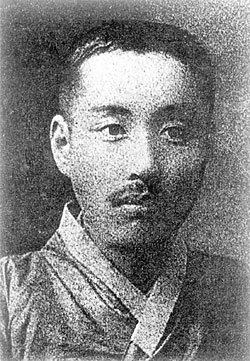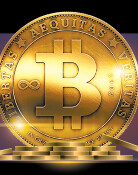Criticizing Japanese Invasion through Political Cartoons
Criticizing Japanese Invasion through Political Cartoons
Posted December. 08, 2003 22:55,

Flying to this mountain, Bokook. Flying to that mountain, Bokook, bokook bokook bobokook. ( parodying a famous Korean folk song)
On April 10, 1910, a political cartoon on Daehanminbo (Korea Peoples Daily) titled Baewoo Changgok-do (picture of an actor singing a song) used the folk song, Sae-taryong (Bird Song), adopting its refrain, Pukook, the sound of a cuckoos cry. The cartoon tries to convey the countrys yearning for regaining its national power against the Japanese imperialism by revising the lyrics of Pukook into Bokook, a similar pronunciation which means to restore the nation.
This cartoon was drawn by Lee Do-young (1884-1933, picture) who is acknowledged as the first cartoonist in Korea. He is esteemed as the pioneer of Korean comics who introduced political cartoons in the modern sense to Korea through Daehanminbo for the first time in 1909. Daehanminbo was one of the nationalistic newspapers during the era of the Korean Empire.
The Korea Comics Museum (CEO Seong Wan-gyoun) in Bucheon, Gyeoggi is exhibiting 90 of his cartoons that were published in Daehanminbo in a special exhibition room of the museum from December until March next year, celebrating the 70th anniversary of his death.
Lee Do-young drew many anti-Japanese and enlightening cartoons, resisting against the Japanese movement to forcefully annex Korea to Japan. He used pun by changing the phrase Jabusangpi, which implies the bad relationship between Lee Wan-yong (most famous among the pro-Japanese) and his daughter-in-law in which they avoided seeing each other, into Jabusangpi which is a woodcutter hurting himself with his own axe. Also, he risked many accusations for his cartoons while using the family names of pro-Japanese personalities as the names for pieces of Yut-nori (a traditional Korean game) and celebrating the death of Ito Hirobumi in the game.
The artist learned traditional painting as a student from famous Korean painters of the time such as Ahn Joong-sik and Cho Cuk-jin, but he drew paintings ample in perspective representation which was rare during that time. After quitting drawing political cartoons in 1910, he taught painting at Seohwa Painting School where Ahn Joong-sik had been teaching. He also continued his work in painting, such as adapting the Chinese Gimyeong Jeoljihwa, a still-life painting style, into Korean style.
Choi Seok-tae, curator of the exhibition, said, The political cartoons of Lee Do-young are alone as paintings that reflect the current issues of that time. He expressed anti-Japanese spirits through these cartoons in criticizing the pro-Japanese personalities, mentioning their real names despite oppression by the office of governor-general until the newspaper was discontinued in 1910 with the annexation of Korea.
The museum is also having an experience booth of Wood-printing Lee Do-youngs Cartoons. 032-320-3745
suhchoi@donga.com







